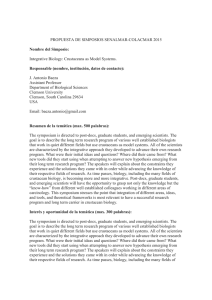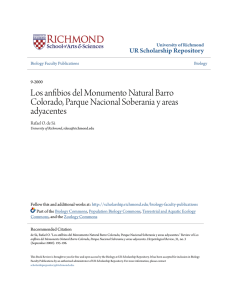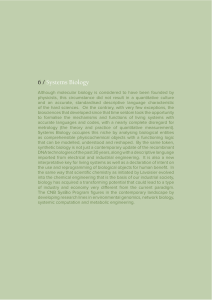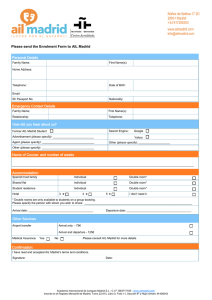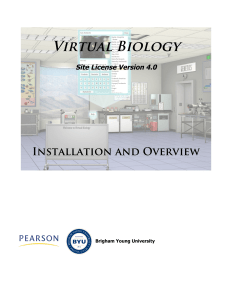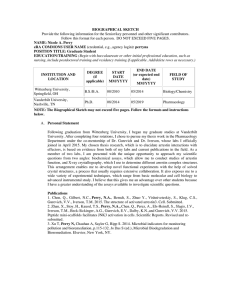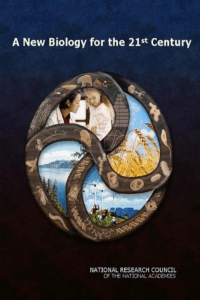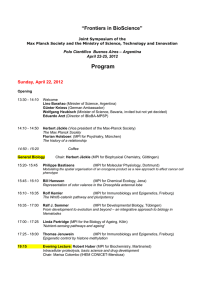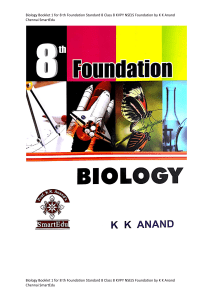Course Guide - Universitat de València
Anuncio
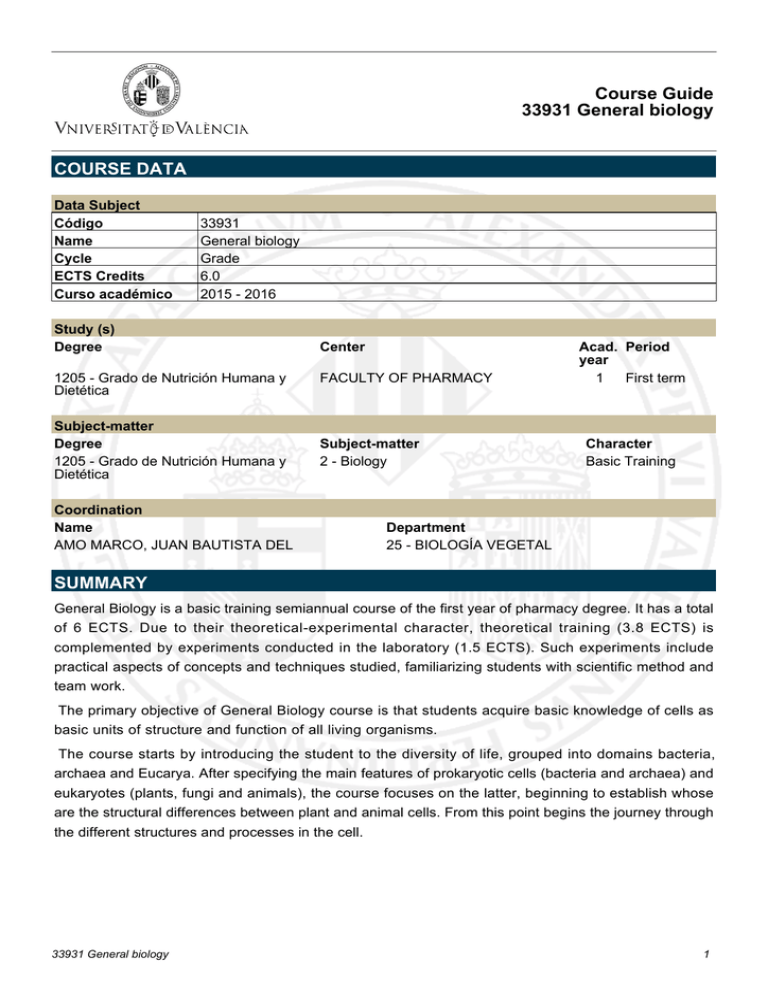
Course Guide 33931 General biology COURSE DATA Data Subject Código Name Cycle ECTS Credits Curso académico 33931 General biology Grade 6.0 2015 - 2016 Study (s) Degree Center 1205 - Grado de Nutrición Humana y Dietética FACULTY OF PHARMACY Subject-matter Degree 1205 - Grado de Nutrición Humana y Dietética Subject-matter 2 - Biology Coordination Name AMO MARCO, JUAN BAUTISTA DEL Acad. Period year 1 First term Character Basic Training Department 25 - BIOLOGÍA VEGETAL SUMMARY General Biology is a basic training semiannual course of the first year of pharmacy degree. It has a total of 6 ECTS. Due to their theoretical-experimental character, theoretical training (3.8 ECTS) is complemented by experiments conducted in the laboratory (1.5 ECTS). Such experiments include practical aspects of concepts and techniques studied, familiarizing students with scientific method and team work. The primary objective of General Biology course is that students acquire basic knowledge of cells as basic units of structure and function of all living organisms. The course starts by introducing the student to the diversity of life, grouped into domains bacteria, archaea and Eucarya. After specifying the main features of prokaryotic cells (bacteria and archaea) and eukaryotes (plants, fungi and animals), the course focuses on the latter, beginning to establish whose are the structural differences between plant and animal cells. From this point begins the journey through the different structures and processes in the cell. 33931 General biology 1 Course Guide 33931 General biology The plasma membrane establish life boundaries: their selective permeability and transport are essential for maintaining integrity of the cell as a coordinated chemical system. Communication mechanisms are based on extracellular signal molecules produced by cells to communicate with their neighbors or distant cells. Also, an elaborate protein system allows cells to respond external signals. Extracellular components, plant cell wall and extracellular matrix of animal cells, establish fundamental differences between both type of cells: Plant cell wall allows life in non-isotonic conditions, while extracellular matrix of plant cells influences intercellular junctions, cell communication and intercellular recognition. Cells have internal compartments delimited by membranes, including endoplasmic reticulum, Golgi, mitochondria, chloroplasts and the nucleus. These compartments provide a suitable environment to carry out specific functions. The nucleus contains the genetic material with the information necessary for the cell to carry out all functions for survival and reproduction. Mitochondria and chloroplasts are semiautonomous organelles that transform energy by using a chemical (mitochondria) or light (chloroplasts) source. Ribosomes, non-membrane delimited organelles, carry out the genetic instructions contained in the nucleus. By the other side, cytoskeleton constitutes a network of fibers necessary for internal cell structure organization and cell mobility. The perpetuation of the species is based on cell division. Mitotic division produces genetically identical daughter cells. Sexual reproduction require the reduction of cell chromosome number, that is performed through a special type of cell division: meiotic division. For all living species, each cell is the vehicle of transmission of genetic information. The study of the the phenomenon of heredity and hereditary variation is called genetics. The acquisition of basic knowledge of this part of biology is essential to understand the molecular basis of disease and the application of recombinant DNA technology, which has allowed the development of several applications of genetics in medicine, agriculture, industry biotechnology, etc.. According to the above, course program is structured to achieve knowledge of cell structure and function, including the processes that allow the transmission of genetic information. PREVIOUS KNOWLEDGE Relationship to other subjects of the same degree There are no specified enrollment restrictions with other subjects of the curriculum. Other requirements 33931 General biology 2 Course Guide 33931 General biology OUTCOMES 1205 - Grado de Nutrición Humana y Dietética - Have the ability to communicate orally and in writing in all possible areas of professional practice; develop a critical perspective, acquire skills for teamwork and assume leadership when appropriate. - Have capacities for analysis and synthesis, for teamwork and to organise and plan activities. - Know how to apply the scientific method and acquire skills for managing the main bibliographic sources. - Adquirir la formación básica para la actividad investigadora, siendo capaces de aplicar el método científico a la resolución de un problema, comprendiendo su importancia y sus limitaciones en materia sanitaria y nutricional. - Know the structure and evolution of cells. - Understand cell function in general terms. - Ser capaz de entender donde tienen lugar los diferentes procesos celulares. - Conocer el ciclo celular y su regulación. - Comprender los principios básicos de la organización del genoma, la herencia y la diversidad biológica. - Conocer los fundamentos químicos, bioquímicos y biológicos de aplicación en nutrición humana y dietética. - Conocer los distintos métodos educativos de aplicación en ciencias de la salud, así como las técnicas de comunicación aplicables en alimentación y nutrición humana. LEARNING OUTCOMES After completing this course, students will be able to: • Know the plant and animal cell structure • Understand how different cellular processes and basic cell signaling systems are performed and where they place on in the cell. • Understand and manage the basic scientific terminology related to the subject of study. • Know how to search for relevant literature to update and deepen knowledge on a specific topic • Work safely and efficiently in a laboratory • Understand and interpret scientific papers related to General Biology Furthermore, it must acquire the following social skills: • Team work ability • Ability to argue from rational criteria, distinguishing clearly between debatable facts and accepted scientific evidence • Ability to speaking before a public audience, such as the class itself, by exposing a brief work, the intervention in a debate on a controversial topic or issue or during the discussion of results in the practical sessions 33931 General biology 3 Course Guide 33931 General biology • Ability to interact with both the teacher and their mates • Ability to build a comprehensive and organized written text DESCRIPTION OF CONTENTS 1. Introduction Evolutionary history of biodiversity: the tree of life. General organization of prokaryote and eukaryote cell. The animal cell and plant cell 2. The plasma membrane Membrane structure and function. Permeability and transport. Osmotic phenomena. Endocytosis and exocytosis. 3. Cellular communication Cell signaling types. Intracytoplasmic receptors. Cell surface receptors: ion channel-associated, G proteins-associated and enzyme-associated. Receptors with enzymatic activity. 4. The extracellular components Plant cell wall. Extracellular matrix of animal cells. Intercellular junctions. 5. Cytoskeleton Cytoskeleton Structure and function, microtubules, microfilaments and intermediate filaments. Cell motility 6. Endomembrane system Endoplasmic reticulum. The Golgi complex. Lysosomes. Vacuoles. Vesicular transport. Other organelles: peroxisomes and glyoxysomes 7. Chloroplasts. Photosynthesis Chloroplast structural features. The photosynthetic apparatus. Absorption of light. Light phase reactions. Photosynthetic CO2 fixation 8. Mitochondria Respiration. Mitochondria Structural features. 33931 General biology 4 Course Guide 33931 General biology 9. The cell nucleus Nuclear components: nuclear envelope, chromatin, nucleolus. Chromatin structure: DNA packaging in chromosomes. 10. The cell cycle Cell cycle phases. Cell cycle control mechanisms . Cell division. Mitosis. Meiosis. 11. Flow of genetic information: from gene to protein Gene organization. The flow of information within the cell. Basic principles of transcription and translation. The genetic code. 12. Introduction to genetics Genetic variation and epigenetics. Location of genes on chromosomes. Sex-linked inheritance. Genetic disorders. Non-nuclear inheritance. 13. Laboratory sessions 1. The optical microscope: principles and management. Observation of histological preparations. Fresh stain: observation of oral mucosa epithelium 2. Membrane permeability. Factors that affect it. Observation of microorganisms in a drop of pond water. Plasmolysis of onion epidermal cells. 3. Respiration in germinating seeds. Observation of mitosis in onion root cells 4. Preparation of histological sections. Observation and elodea and cellular ciclosis WORKLOAD ACTIVITY Theory classes Laboratory practices Seminars Tutorials Development of group work Readings supplementary material Preparation of evaluation activities Preparing lectures Preparation of practical classes and problem TOTAL 33931 General biology Hours 38,00 15,00 2,00 2,00 10,00 2,00 23,00 40,00 15,00 147,00 % To be attended 100 100 100 100 0 0 0 0 0 5 Course Guide 33931 General biology TEACHING METHODOLOGY Theory classes. For theory classes lectures will be given, since this method allows the lecturer to give key concepts to understanding the subject and recommend further detailed study. In some classes student participation will be used, both between students, and between students and lecturer. Laboratory sessions. In these classes students will be able to learn the practical applications of the knowledge gained in the theory classes. Tutorials. Tutorials will be carried out in small groups, where the teacher will direct students about everything related to the learning process, both in global and concrete terms, including the supervision of tasks. Seminars. The seminars will be held by an oral presentation and discussion of topics previously proposed by the teachers. In these workshops, students will exercise the ability to outline, summarize, write and orally express the topic chosen. Both the written preparation and the oral and written presentation must be carried out as a group (3-4 students) and all of them must participate in the presentation. After each seminar there will be a debate where the majority of the participation should be between students . EVALUATION Evaluation: Knowledge gained during theory and lab classes, will be evaluated. In order to be eligible for examination, students must have attended ALL the laboratory sessions. If the student has enrolled for the first time on the course, this requirement extends also to attend ALL the tutorial sessions. The maximum score is 10 points, distributed according to the following criteria: Theoretical and practical written exam: Counts up to 9,0 points The exam will include questions about knowledge acquired in the theory (7,5 points) and laboratory sessions (1.5 points). The exam may include short and long questions, as well as multiple choice tests, where students must relate concepts learnt in different lessons. Seminars: Count up to 1 point Content and oral presentation will be evaluated. Final score 33931 General biology 6 Course Guide 33931 General biology The final grade will be made up of the sum of the individual parts examined. In order to sum the different parts, a minimum score of 4.5 points must be obtained in the theoretical and practical written exam. The seminar score will only be added to the final grade if the student have obtained at least this 4.5 points in the he theoretical and practical written exam. First Call There will be an examination of the whole subject at the end of the first semester/term. If the student does not sit first call exam, his grade will be “not present”. Second Call: If the student has not passed the subject on first call, he can go to a second call. In this second call, the student will be examined again on all the theoretical and practical subjects, with a maximum score of 10 points. REFERENCES Basic - Alberts B y col (2006). Introducción a la Biología Celular.2ª Ed. Médica panamericana, Madrid - Becker WM y col. (2007). El Mundo de la Célula, 6ª Ed. Pearson Education, Madrid - Campbell NA y Reece JB (2007). Biología, 7ª Ed. Médica Panamericana, Madrid - Curtis y col. (2008). Biología, 7ª Ed.Médica Panamericana, Madrid - Dale JW y von Schantz M (2007). From Genes to Genomes. Concepts and Applications of DNA Technology. Wiley, Chichester - Escaso y col. (2010). Fundamentos Básicos de Fisiología Vegetal y Animal. UNED/Pearson, Madrid - Freeman, S. 2010. Fundamentos de Biología. 3ª ed. Pearson educación. Madrid - Karp, G. 2010. Biología Celular y Molecular. 6ª ed. McGraw-Hill Interamericana. Madrid. - Lodish H y col. (2004). Molecular Cell Biology. Freeman, new York - Paniagua, R. y col. (2007). Biología Celular. 3ª Ed. Tomo I. MacGraw-Hill Interamericana. Madrid - Ponsoda X. Y col. (2000).Pràctiques de Citologia i Histologia. Publicacions de la Universitat de València, Colecció: Educació. Materials Additional - http://www.medicapanamericana.com/campbell/ - http://www.nature/index.html - http://www.nature.com/molcellbio/index.html 33931 General biology 7


